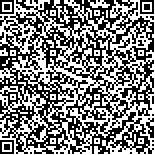下载中心
优秀审稿专家
优秀论文
相关链接
摘要

地表反照率表征地面对太阳辐射的反射能力,在地表能量平衡中起着重要的作用。2008年黑河的WATER实验中,针对机载红外广角双模式成像仪(WIDAS)观测角度小的特点,发展了一种基于MODIS二向性反射分布函数(BRDF)原型估算WIDAS反照率的算法。然而,在2012年黑河HiWATER实验中,WIDAS的观测角度范围由早期30°观测天顶角升级为最大观测天顶角52°,这一改造对数据预处理(辐射定标、大气校正和多角度配准)产生影响,使WIDAS数据出现明显的噪声,为WIDAS地表反照率的反演带来新挑战。针对新问题,采用新的地表观测数据,进一步验证了BRDF原型算法反演机载WIDAS反照率的能力。为了获取准实时BRDF先验知识,基于核驱动模型和各向异性平整指数(AFX)首先准实时提取了实验区5种MODIS的BRDF原型;然后,将其作为先验知识应用到黑河WIDAS机载数据的反照率反演中;最后,利用实验区的反照率实测数据进行算法验证。本研究比较了3个算法处理该问题的能力:(1)基于BRDF原型作为先验知识的算法;(2)完全基于核驱动的全反演算法;(3)基于朗伯假设的方法,通过算法对比分析,可更好地分析验证算法(1)的性能。结果表明:(1)BRDF原型算法反演精度最高且稳定,尤其是当观测数据位于垂直主平面时,全反演算法由于缺少大角度观测数据的约束,更容易出现异常值;BRDF原型算法的最大绝对误差为0.034,相对于全反演算法和朗伯假设方法精度分别提高了约18%和71%;(2)针对2012年黑河机载WIDAS观测噪声较大的新问题,BRDF原型反演算法表现出了良好的抗噪声性能。通过对WIDAS反照率反演和验证进一步表明,在多角度观测数据信息量不足以进行全反演,且观测受噪声影响较大时,BRDF原型作为先验知识,提供了一种有效解决该问题的手段,对提高反照率反演的精度、增强反演的稳定性有重要作用。
Surface albedo qualifies the proportion of incoming light reflected by the land surface and plays an important role in the earth's energy budget. In the WATER experiment of Heihe in 2008, we developed an algorithm for estimating the albedo of Wide-angle Infrared Dual-mode line/area Array Scanner (WIDAS) based on the MODIS Bidirectional Reflection Distribution Function (BRDF) archetype-based algorithm for the narrow-angle observations of the airborne WIDAS. However, in the HiWATER experiment in 2012, the WIDAS observation angle range was upgraded from the early 30° to the maximum observation zenith angle of 52°, which impacted the data preprocessing (radiation scaling, atmospheric correction, and multi-angle registration). This condition caused significant noise and created new challenges for the surface albedo inversion of WIDAS.
In the current study, we addressed new problems and adopted new surface observation data to verify the ability of the BRDF archetype-based algorithm to retrieve the albedo of WIDAS. To obtain quasi-real-time BRDF prior knowledge, we first extracted five BRDF archetypes as a priori information from 500 m MODIS BRDF parameter product (MCD43A1) within the Heihe experimental region. Then, we applied these BRDF archetypes to airborne WIDAS multi-angular observations for albedo estimates based on the hotspot-corrected linear kernel-driven BRDF model, that is, RossThickChen-LiSparseReciprocal model. Finally, field albedo measurements were conducted to validate the broadband albedo estimates.
We compared three commonly used albedo estimate methods, namely, the BRDF archetype-based algorithm that was developed in our previous paper; full-inversion BRDF/albedo algorithm that has been adopted as the operational MODIS BRDF/albedo algorithm; and Lambertian assumption method that is commonly used to estimate surface albedo, especially when only nadir observations are available. The performance of the BRDF archetype-based algorithm was verified by comparison and analysis of the algorithms. Unsurprisingly, the accuracy of the albedo retrievals by using the BRDF archetype-based algorithm was obtained at 0.034, which was 18% and 71% higher than those of the full inversion algorithm and the Lambertian assumption method, respectively. The inversion and verification of the WIDAS demonstrated that the BRDF archetype-based method was noise resistant and obtained stable albedo estimates. Therefore, our previous conclusions were confirmed by using new WIDAS observations.
Given the merit of the proposed archetype-based algorithm, we strongly recommend it to the user community, especially for narrow-angle observations that need a priori information for stable retrievals of surface albedo.

